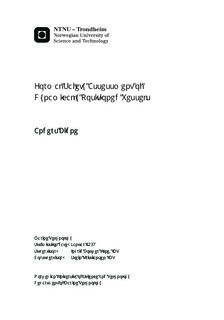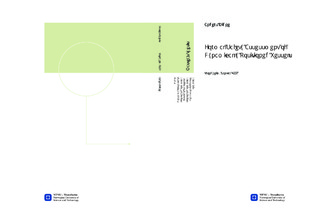| dc.description.abstract | The main objective of this paper is to make use of the Bayesian Belief Network (BBN) method for analysis of marine accidents in relation to Dynamic Positioning incidents (DP-incidents), and try to improve upon the model of earlier works.
BBN has become an accepted method in the last two decades for analyzing conditional probabilities and incidents, especially where extensive data may be lacking.
The report will explain the methodology used in sensitivity analysis of the causal factors, and analyze DP accident scenarios. Data is provided by IMCA Incidents reports from the years 2000 to 2007, previously analyzed and sorted by Global Maritime.
The computer software, GeNIe 2.0, was used to build a BBN to visualize the full system and sub-systems, along with dependencies among causal factors and calculate probabilities. A sensitivity analysis was also performed to see which causal factors had most influence on the different terminal events. This analysis showed that human errors had a high occurrence and impact on the terminal events.
Poor procedures was the causal factor that occurred most often (25 % of all incidents), and most often lead to a loss of position. Amongst the preliminary causes, poor procedures had the highest improvement potential in terms of every terminal event.
Operator error was another human error that proved to have a high improvement potential. It occurred in 16 % of the incidents as a main cause, and in 6 % as a preliminary cause, but the improvement potential was higher for this cause than all the latent human errors combined.
Amongst the components, DP-software had the highest improvement potential in terms of drive-off, major and minor loss of position, (LOP1 and LOP2), and second highest in terms of uncertain (drive-off or drift-off).
In terms of drift-off, environmental main causes such as wind and current proved to have the highest improvement potential, but in order to actually improve such causes, focus should be made on the human preliminary causes, along with thrusters and power generation. | |

